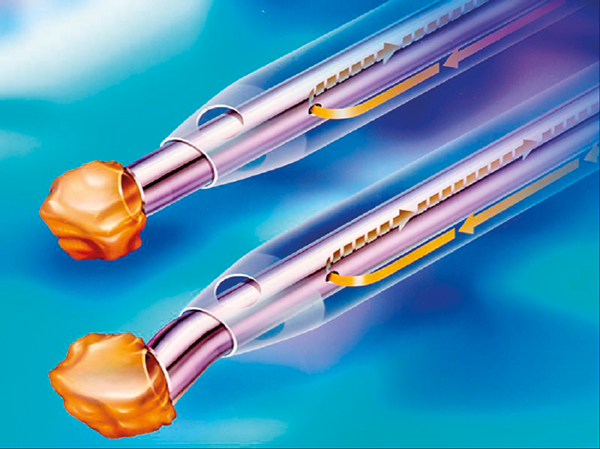Understanding phacodynamics is appreciating the subtleties in the dynamic changes of the fluidics and the ultrasonic power delivered. Kristina Southcott explains.
Increase my vacuum!
Increase my bottle height!
Increase my phaco power!
I frequently observe the above commands being directed at the scrub nurse during a cataract operation.
The question is, what are you hoping to achieve when requesting such changes? For some, it’s obvious; a dense cataract, presumably means you need more phaco power? Perhaps you feel your quadrant isn’t coming to the phaco tip?
I appreciate most surgeons have a general understanding of phaco principles, and know their preferred settings. I’d like to discuss the principles of phacodynamics from a practical standpoint from my experience creating and changing surgeons’ settings, and ultimately the questions that arise from my time spent in theatre.
Understanding phacodynamics is appreciating the subtleties in the dynamic changes of the fluidics and the ultrasonic power delivered.
Perfecting your settings is about harmonising all the key elements of phacodynamics: the irrigation, aspiration, vacuum and phacoemulsification. This is Followability.
Do you know what pump system your machine uses?
Peristaltic and venturi work and need to be handled differently. However, whether you are using a peristaltic machine or a venturi system, you are ultimately trying to achieve the same outcome: the safe removal of a cataract through a balance of fluidics and ultrasonic energy.
Balancing your fluidics. What exactly do I mean? Initially I mean your fluid entering the eye. In other words – the irrigation!
Irrigation
Passive irrigation resulting from a gravity fed or pressurised infusion produces a pre-set flow of fluid entering the eye. The primary aim is to create a workable intraocular pressure (IOP).
Centurion® Vision System (Alcon) is designed to actively maintain a constant IOP. Active Fluidics™, automatically compensates for pressure changes, providing a very stable anterior chamber. The surgeon sets a target IOP, and the system works to monitor and maintain it, allowing for consistency across variable flow rates. This is shown to improve surgical efficiencies [1].
Let’s assume you are using a passive irrigation system: Have you considered the reasons you increase or decrease the bottle height?
Perhaps your fragment is repelling from the tip – it might indicate your bottle height is too high and repelling nucleus matter. Too little irrigation; you risk a soft eye or chamber instability.
What about when you begin aspirating the fluid from the eye? Have you noticed how your IOP drops as soon as you start aspirating?
A venturi system achieves aspiration by a constant vacuum – a negative pressure drawing fluid from the eye.
Aspiration
The Infiniti® and Centurion Vision Systems (Alcon) have two controllable factors: aspiration and vacuum. Both different but related; and it’s very important to know the difference between the two.
Fluid is drawn / milked through the line as the tubing is compressed by rollers on the pump. The speed / rate of fluid pulled through is determined by pump speed. This is what controls the aspiration. This is what you are changing when changing the ‘Asp Rate’ on your Infiniti or Centurion (Figure 1).
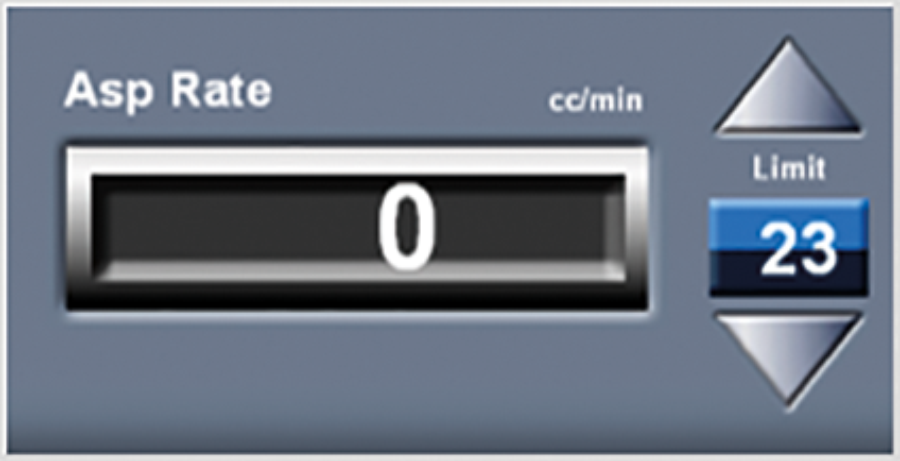
Figure 1: Asp Rate.
It’s quite simple – if you increase the aspiration rate, you increase the speed of the rollers, therefore increasing the fluid drawn from the eye. So if you’re not getting the attraction to the tip you desire, your aspiration rate settings should be the first thing you consider adjusting.
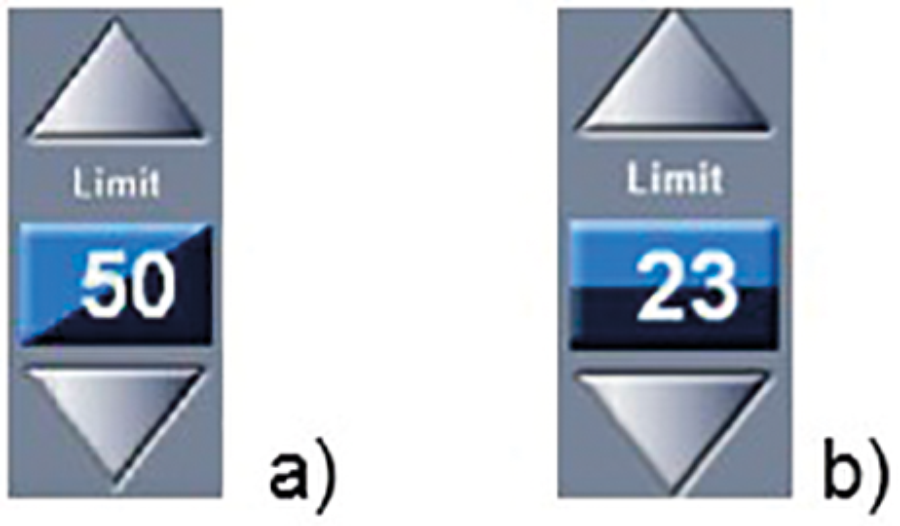
Figure 2: Linear (a) and fixed (b).
Linear or fixed? (Figure 2) It depends on how many dynamic factors you wish to control. A fixed aspiration rate means you get a consistent and predictable flow and attraction – perhaps helpful during a Sculpt or Quadrant removal setting. An Epinucleus setting might require more control on the attraction, as you move closer to the capsular bag, so perhaps in this case, consider a linear setting?
An important feature of aspiration is its cooling effect of the tip. Have you considered increasing the aspiration rate for a dense cataract?
Figure 3: Occlusion.
Vacuum
So when does vacuum come in?
When obstruction of the aspiration port (tip) (Figure 3) or the aspiration tubing prevents any further movement of fluid, the pump will keep on moving. This creates a negative pressure in the aspiration line, and creation of a rise of vacuum.
The vacuum limit can be set to fixed or linear, depending on which factors you wish to control.
Please consider that vacuum ONLY builds when there is occlusion. So, think of your vacuum as your holding force. How hard do you wish to hold on to your fragment, before you phaco the fragment? Perhaps a low vacuum during sculpt? It’s unlikely you would want to ‘hold’ on to your fragments while you are creating a groove.
The speed in which you achieve your maximum pre-set vacuum after occlusion is the ‘Rise Time’, which is proportional to the pump speed / aspiration rate. This can be increased or decreased depending on your technique or procedure step. For instance, a phaco chop technique usually leans towards a fast rise time.
High vacuums are usually associated with surge – as the ‘back filling’ of fluid in the tubing, that occurs during an occlusion break results in a sudden drop of IOP. Have you thought about how you will compensate for this surge when you are about to break an occlusion?
Centurion® Vision System seeks to minimise surge through its low compliance (stiff) tubing as well as its Active Fluidics: the software and fluidics management system work together to manage irrigation pressure by automatically adjusting compression of the fluid bag and using quick opening valve technology when needed.
However, all machines will still experience some level of surge, which should be taken into consideration when working with high vacuum.
Phacoemulsification
You’ve checked your inflow is sufficient and checked your outflow settings are correct – yet you’re still getting an unstable anterior chamber?
Something else to consider is your incision. If the wound construction is too loose, you may experience leakage – perhaps you may need to compensate with a higher bottle height.
Is your phaco sleeve the correct size for your incision? Too loose and you may experience leakage, which will affect your fluidic equilibrium. Too tight, and you limit the inflow, reduce manoeuvrability and increase tip friction (with the potential for thermal injury).
So, we’ve discussed fluids but how do they relate to ultrasonic energy? I mentioned above about the impact fluid has on cooling the tip. But what about the phaco settings?
Simply put, phacoemulsification frequency utilises high frequency (40.000Hz), ultrasonic vibrations passing through the tip of the hand- piece, to break up / emulsify the cataract ready for aspiration.
It’s widely accepted that the lower the amount of energy / heat delivered, the better. So most surgeons aim to reduce their energy / thermal profile, yet maintain an efficient and effective cataract removal.
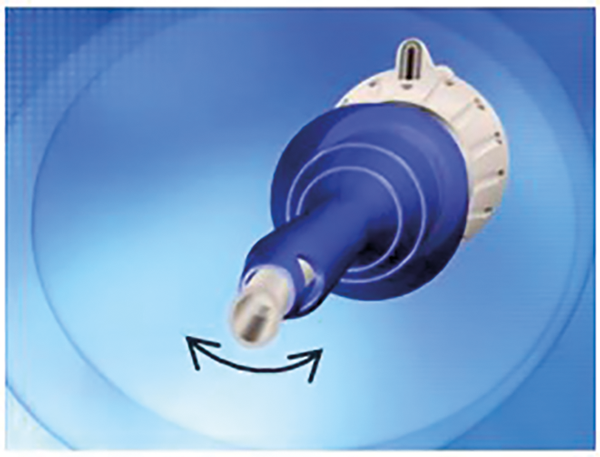
Figure 4: Torsional phaco.
Alcon’s main method of reducing the thermal profile is the use of torsional phaco power. The side-to-side movement to provide a ‘shearing’ effect (Figure 4) for optimal cutting efficiency and minimal repulsion [2,3,4,5,6].
Other phaco mode options from Alcon and most other manufacturers are Pulse and Burst; where power is modulated, to deliver less energy to the eye, offer more cooling and help to overcome repulsion. An example of a Pulse modulation can be seen below (Figure 5).
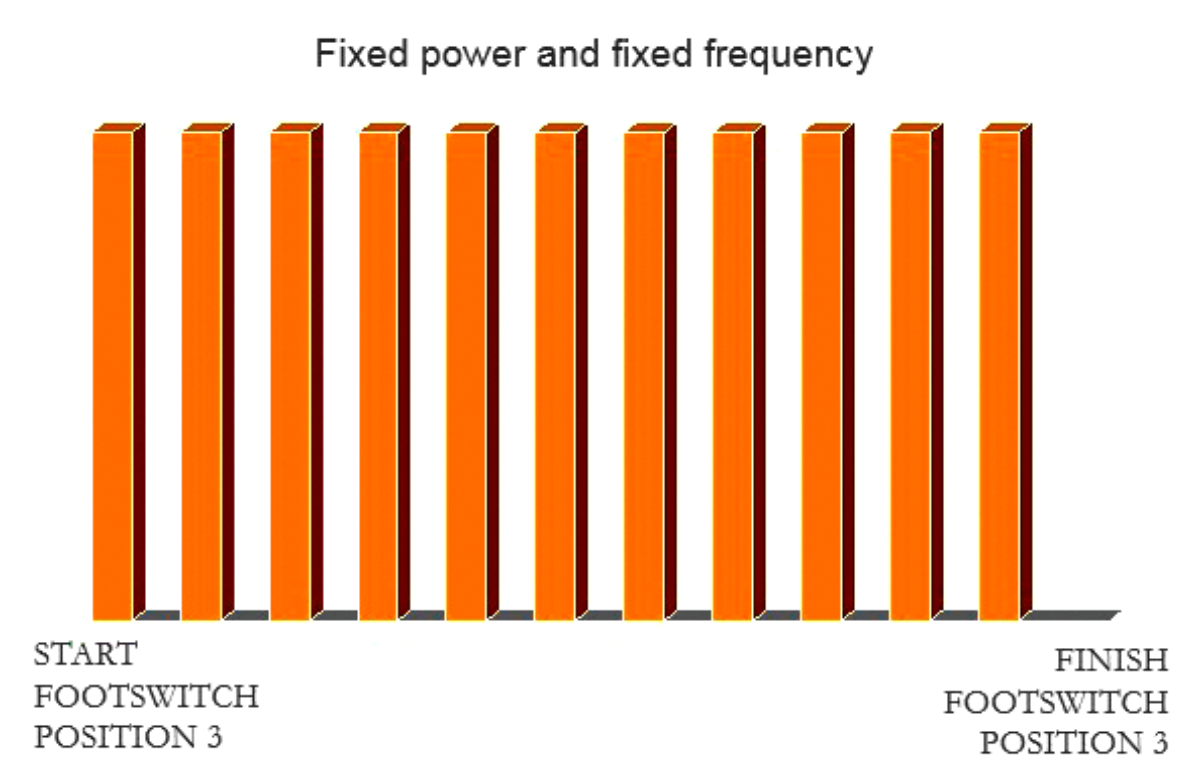
Figure 5: Pulse.
When should you raise the power? Dense lens? Yes, of course! However, have you considered what your minimum power setting is? A very low % power will have very little effect on a dense cataract, but will still generate unwanted heat. This could place unnecessary stress on the zonules and the eye in general.
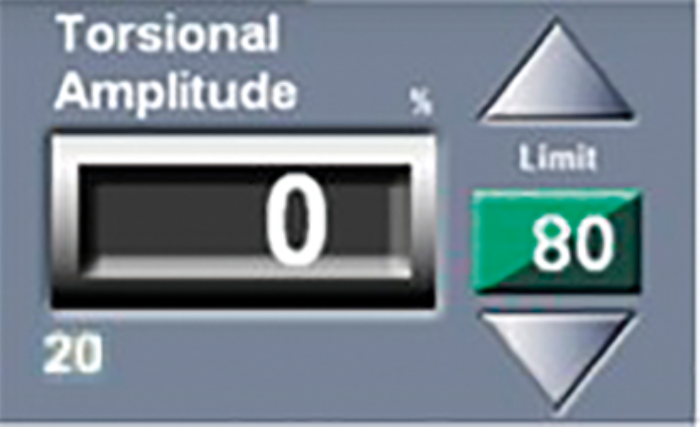
Figure 6: Phaco parameters.
Setting a higher minimum % (Figure 6), would actually serve to reduce the time spent in foot position 3 and unnecessary energy delivered in the eye in this case – something to bear in mind when operating on a dense cataract.
So think about how the other parameters might affect your ability to efficiently phaco the cataract. The higher the vacuum, perhaps the higher the chance of embedding yourself within the cataract nucleus. Too little vacuum; perhaps you’re not generating enough holding force / holdability to the tip to efficiently occlude the tip. Too high with the irrigation; perhaps the aspiration rate isn’t high enough to compensate for the inflow, therefore the fragment doesn’t flow to the tip.
As you can see, it’s all about balance. This article is designed to make you Think about your settings, and not take them for granted. It’s about knowing what works for you, your technique and what to adapt when necessary.
It’s a lot to take in – but just remember, it’s knowing what the machine is trying to achieve, and what you may wish to change depending on what you may encounter in the course of the procedure.
References
1. Solomon KD, Lorente R, Fanney D, Cionni RJ. Clinical study using a new phacoemulsification system with surgical intraocular pressure control. J Cataract Refract Surg 2016;42:542-9.
2. Rekas M, Montés-Micó R, Krix-Jachym K, et al. Comparison of torsional and longitudinal modes using phacoemulsification parameters. J Cataract Refract Surg.2009;35:1719-24.
3. Davison JA. Cumulative tip travel and implied followability of longitudinal and torsional phacoemulsification. J Cataract Refract Surg 2008;34(6):986-90.
4. Vasavada AR, Raj SM, Patel U, et al. Comparison of torsional and microburst longitudinal phacoemulsification: a prospective, randomized, masked clinical trial. Ophthalmic Surg Lasers Imaging 2010;41:109-14.
5. Cionni RJ. Length and frequency of intraoperative occlusive events with new torsional phacoemulsification software. J Cataract Refract Surg 2011;37(10):1785-90.
6. Liu Y, Zeng M, Liu X, et al. Torsional mode versus conventional ultrasound mode phacoemulsification; randomized comparative clinical study. J Cataract Refract Surg 2007;33(2):287-92.
TAKE HOME MESSAGE
-
Please consider that vacuum ONLY builds when there is occlusion.
-
A venturi system achieves aspiration by a constant vacuum – a negative pressure drawing fluid from the eye.
-
An important feature of aspiration is its cooling effect of the tip.
-
Do spend some time going over your phaco machine with your surgical representative, they possess a wealth of useful knowledge and can truly help you use the machine to its full potential.
Declaration of competing interests: The author is employed by Alcon UK, manufacturer of the Infiniti® and Centurion Vision Systems.
The Eye News team does not endorse the use of any one manufacturer’s equipment over another.
COMMENTS ARE WELCOME

